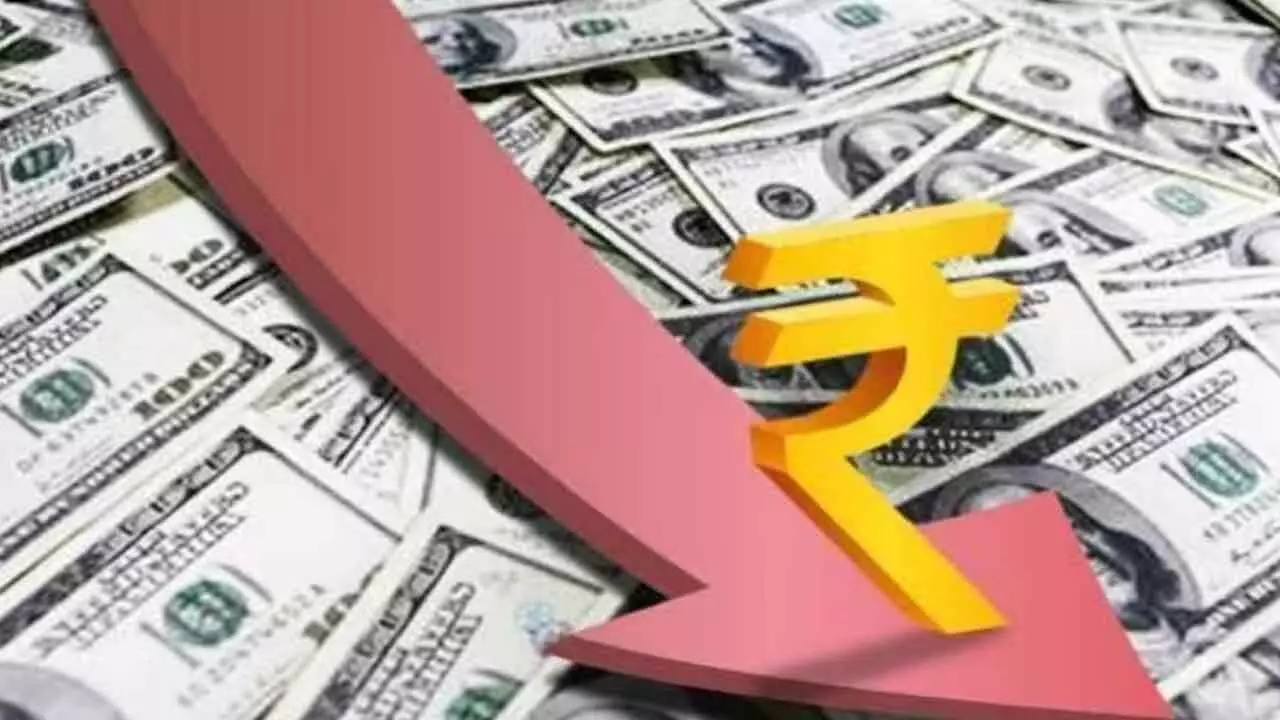Fall Of Rupee A Crisis, Not Disaster; Need Timely Policy Intervention
Fall Of Rupee A Crisis, Not Disaster; Need Timely Policy Intervention

The recent fall of the rupee vis-à-vis is a crisis, not a disaster. But the demonization of US President Donald Trump has conjured up a scenario that terrifies everyone. This is not to say that all is well; the rupee did fall to a record low of 87.29 to the dollar in the opening trade of Monday, closing at 87.185. It is also true that the trigger was Trump’s punitive tariffs on imports from China, Mexico, and Canada, and the fears of an imminent trade war in the foreseeable future.
Ever since Trump’s victory on November 5, 2024, in the presidential election, (mostly liberal) political commentators and economic analysts have been trying to paint a bleak future not just for the US, but also for the entire world. This has led to the build-up of fear psychosis everywhere, including in India. Much of the rupee’s decline is attributed to that. We should not lose sight of the fact that the rupee has been declining against the dollar since October, even as the Reserve Bank of India (RBI) has been selling billions of dollars to stem the tide.
Unsurprisingly, Congress president and Leader of Opposition in Rajya Sabha Mallikarjun Kharge attacked the government for the rupee’s fall, “in 2013, when Narendra Modi was the Chief Minister of Gujarat and the UPA government was in power at the Centre, he used to say, ‘Rupee is in ICU’ and has taken downwards dive, Today, the rupee is on a ventilator; it has crossed 87.”
The politics of allegations and counter-allegations will continue unabated, but policy and decision makers should beware of any hasty, knee-jerk reactions. They must remember that the causes of the fall of the rupee are both immediate and deep-seated.
The rupee has been under pressure due to the strengthening of the US dollar index, which is hovering around 110. This surge is driven by strong US jobs data and expectations of higher interest rates, as noted in a report by financial services company Angel One. Besides, foreign institutional investors (FIIs) have been net sellers in our country, offloading approximately $11 billion in the third quarter of 2024-25. This capital outflow has further contributed to the rupee’s depreciation.
Another key factor weighing on the rupee is India’s widening trade deficit, which has reached $188 billion in the current fiscal; is estimated to grow by 18 per cent compared to FY24. The persistent trade imbalance exerts downward pressure on the currency, resulting in 3.6 per cent depreciation over the past 10 months.
To stabilize the rupee, the government must prioritize reducing the trade deficit, if not eliminating it. The most effective way to achieve this is by increasing merchandise exports, which would help balance foreign exchange outflows. Strengthening India’s manufacturing sector is essential to achieving this goal. Excellence in manufacturing will not only boost exports but also reduce dependency on imports, ultimately narrowing the trade deficit and supporting the rupee.
Policymakers must focus on enhancing manufacturing capabilities through improved infrastructure, policy incentives, and investment in technology and skill development. Encouraging domestic production and global competitiveness will be crucial in reversing the current trend of rupee depreciation. Strengthening manufacturing and export-oriented industries can provide long-term economic stability and mitigate external pressures that affect the currency. All this will necessitate a rational policy response, not a knee-jerk reaction.

